“…when [Joseph Hazen] told me how idiotic he had thought our gimmick was, I answered, ‘Well, all it goes to show is that you were wrong to attach any importance to the MacGuffin. Notorious was simply the story of a man in love with a girl who, in the course of her official duties, had to go to bed with another man and even had to marry him. That’s the story. That mistake of yours cost you a lot of money, because the movie cost two million dollars to make and grossed eight million dollars for the producers.'”
Contrast produces an immediate effect. Similarity satisfies us only in the long run. Contrast is an element of variety, but it divides our attention.Similarity is born of a striving for unity. … When variety tempts me, I am uneasy about the facile solutions it offers me. Similarity, on the other hand, poses more difficult problems but also offers results that are more solid and hence more valuable to me.
After the brief opening trial scene, we move quickly to the introduction of our lovers, with Alicia offering Devlin a drink at a party at her home.
The morning after the party, Alicia is given a hangover remedy by Devlin. The drink here is the indicating the care that Devlin will take for her well being, both as her spy handler and as her would-be lover. This scene is also a parallel to a key scene late in the film when Alicia is rescued by Devlin.
The romance between Devlin and Alicia first blossoms in this flirtatious scene over drinks in a Rio café.
Devlin fetches a bottle of champagne to enjoy a dinner date with Alicia. On the way back to the apartment however, he stops by to receive orders which will ultimately drive Alicia into the arms of the Nazi criminal played by Claude Rains. The scene begins by panning up from this bottle to the conflicted Devlin.
The scene ends by panning down to a shot of the abandoned bottle, a visual symbol foreshadowing that Devlin and Alicia’s romance will remain unconsummated.
After the remarkable conversation in which Devlin delivers her instructions, and she accepts, Alicia moves into the room and pours herself what appears to be a stiff drink. She is at once fortifying her nerve for the assignment ahead, and marking a possible return to the abuse of drink that she displayed earlier in the film. I note in passing that this is the only shot in the film where Hitchcock shoots through an obstruction like this curtained window. Through a visual separation from the camera, he marks the separation that has just taken place between the characters.
In this scene, Alicia has caught the Nazi, Alex Sebastian, in her trap of seduction. Of course this scene is a mirror of the earlier scene in the café, with Devlin now replaced by Sebastian.
The visual unity of theme continues in the dinner party scene, where Alicia is introduced to the cast of villains. Here one of the Nazi conspirators betrays himself by pointing to the wine bottle, afraid that one of the ones being used to hide uranium samples has been set out to be served by mistake.
Unfortunately, it was Emil who was mistaken, and his clumsy blunder will cost him his life. His fellow conspirators will deliberate and decide his fate, of course over after-dinner drinks.
Even Hitchcock’s signature cameo involves a drink! As Alicia and Devlin enter the room at the party in the central sequence in the film, the Master of Suspense is seen downing a glass of champagne.
Here is yet another clever use of drinks…suspense is built by a series of four shots during the party sequence depicting the diminishing supply of champagne. When the bottles run out, Sebastian and his servant will come down to the wine cellar and discover Devlin and Alicia poking around in the forbidden room where the criminals have hidden their disguised uranium samples in wine bottles.
In a rapid series of edits, which illustrates Hitchcock’s brilliance in visual storytelling, the uranium is discovered when Devlin knocks a bottle to the floor, shattering it and spilling the contents. This sequence is incredibly dull on paper (Devlin explores a wine cellar and knocks over a bottle of wine, discovering the contents) but is in fact the most suspenseful scene in the film. In a film renowned for some brilliant long takes, this sequence is edited with a brisk pace and cuts between the action in the cellar and the “champagne countdown” upstairs to create maximum tension, again while staying with the single unifying symbol of the drink.
Alicia’s betrayal is discovered when Sebastian examines the wine cellar the next morning. A false bottle has been put in place of the broken one, and the false wife has been discovered.
In the poisoning montage that follows Sebastian’s discovery and revelation to his wicked mother, several ominous shots of Alicia’s coffee cup are included. It is unclear to Devlin at first that she is becoming weak and ill from poison; he assumes that she has returned to the liquor bottle to cope with the strain of her situation, tying the climax of the plot very closely to the exposition through the visual symbol of drinking.
Again, Hitchcock’s economy of storytelling is linked to his economy of visual symbolism. In other films, the passage of time is indicated with such bald images as the hands of a clock moving, or pages flying off of a calendar. Here, simply cutting between a shot of a full cup, to a shot of a pacing and nervous Devlin waiting in vain for his meeting with Alicia, to a shot of a nearly empty cup, at once deftly indicates the passage of time while simultaneously heightening the tension for the audience, who know she is being poisoned.
Once again, a character’s key moment of discovery happens when a drink is being shared. Through the carelessness of the guest nearly grabbing the wrong cup, Alicia realizes that she is being poisoned.
The final shot involving drinking in the film. This serves to illustrate the casual and even callous way that Alicia has been handled by her spy masters. While Alicia lies on her deathbed, watched over by her evil Mother-in-law, Prescott lounges on the bed enjoying a snack and a drink in relaxed comfort, unconcerned with Alicia’s personal fate.
I haven’t even touched on some of the other brilliant unifying visual touches, such as the mirrored scenes of silhouetted characters, the shots of characters smoking as they coolly deliberate Alicia’s fate, the shots of descending or ascending the staircase, or the parallel of the famous long-take kiss in the beginning of the film, and the less famous long-take kiss when Devlin rescues Alicia. Or the justly renowned establishing shot of the party which zooms in from a bird’s eye view all the way to a tight closeup on the object in Alicia’s hand… You can discover or re-discover these things for yourself, as surely you must.
Since this is part of the Criterion Blogathon, it wouldn’t be right to leave without a few words about the Criterion edition of this film. The 2001 Criterion DVD of this film is the second copy which I have owned, and is sadly out of print. I first purchased the Fox edition when it was released in 2008 as part of a collection of Hitchcock’s early Hollywood films whose rights are now in their hands. The cover art is serviceable, designed to fit in with the other films in the set, Rebecca and Spellbound.
If you have bothered to read this far, you can see why the Criterion cover (first image in the post) is so far superior to this one, and indeed is so perfect as to seem to be the only right choice once you have seen it. The care and artistry with which Criterion creates the packaging which houses the extraordinary films in their collection is truly unparalleled in the realm of home video.
The true completeist might wish to own both versions, as they contain almost entirely different bonus features, including two separate commentaries on each edition. The Criterion edition has a commentary from Hitchcock scholar Marian Keane, and one from film historian Rudy Behlmer, which I believe originally came from the Laserdisc release. Another notable exclusive to the Criterion DVD is the complete Lux Radio Theatre adaptation from 1948, with Ingrid Bergman and Joseph Cotten. Both versions have a good looking standard definition restored print, but the Criterion one seems to be a bit sharper in focus and generally brighter.
In summary, I raise a glass in tribute to this most perfect of Hitchcock’s thrillers. If you have never experienced this rich cocktail, then you owe it to yourself to view this film, a true gem of the Hollywood postwar era, and my favorite Hitchcock film.
Postscript addendum:
This film was remade, believe it or not, in the most unlikely of places: Star Wars: The Clone Wars! When I first watched the season two episode, “Senate Spy,” in 2009, I was amazed to discover what was essentially a distillation of the Hitchcock film. Padmé and Anakin take the place of the Alicia and Devlin characters in the Star Wars setting. Unfortunately, while a well meant tribute, the episode suffers from the limitations of the mannequin-like character models trying to sustain far too much dialogue. Nevertheless, this tribute is an interesting testimony to the lasting influence of an iconic film.

Ingrid Bergman’s hair was almost this fantastical in the party scene…



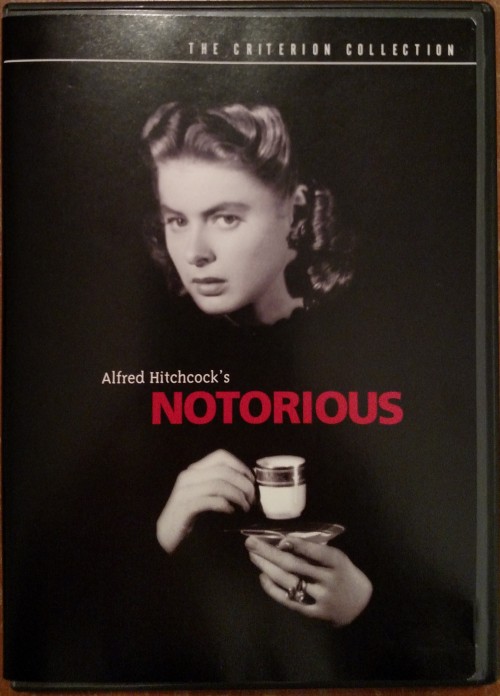
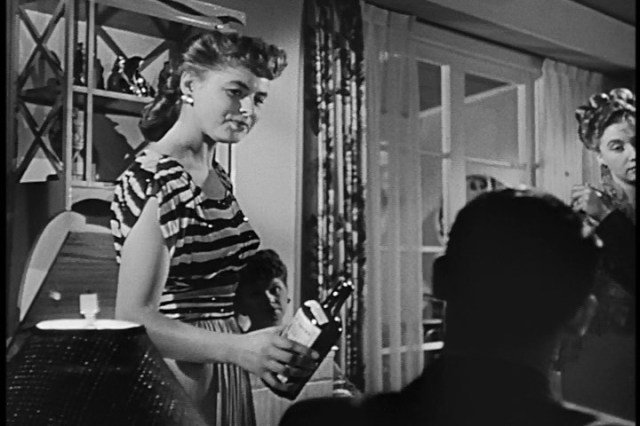
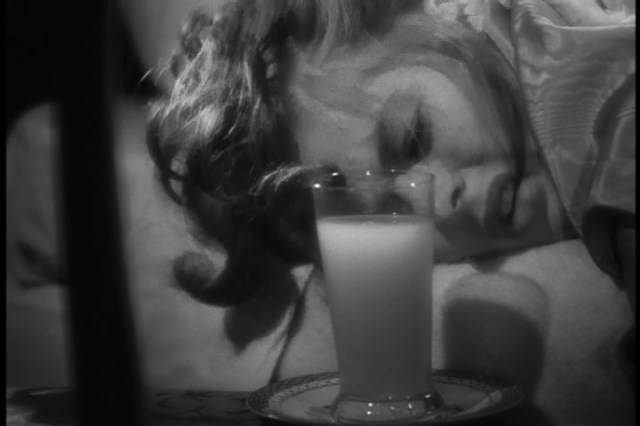
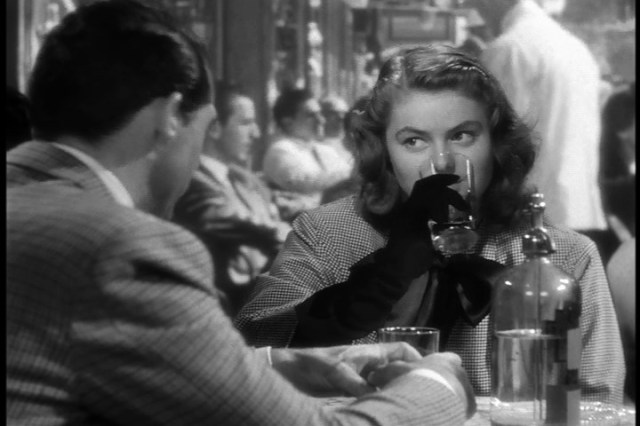

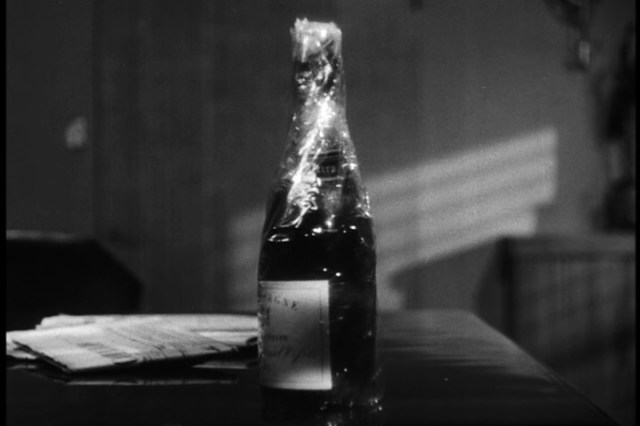
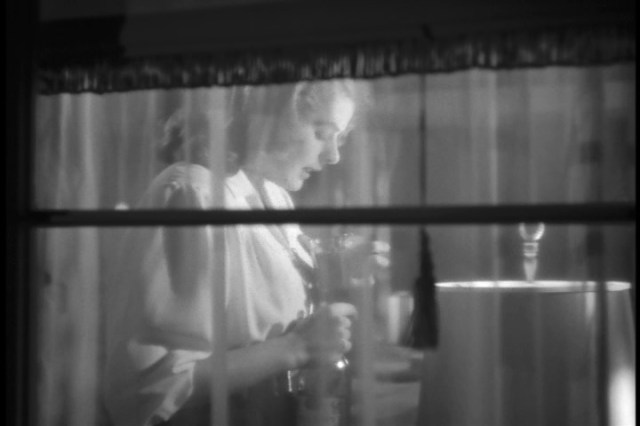
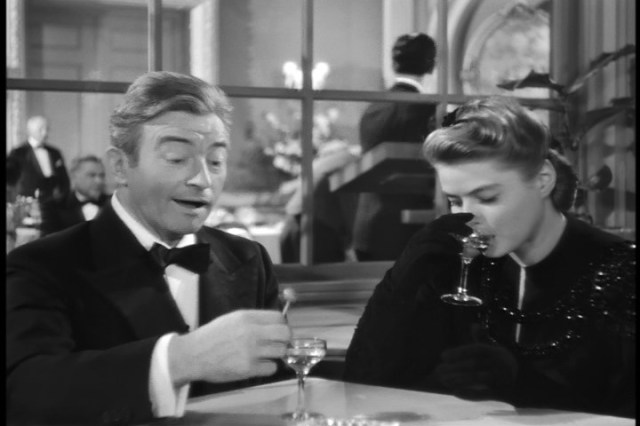
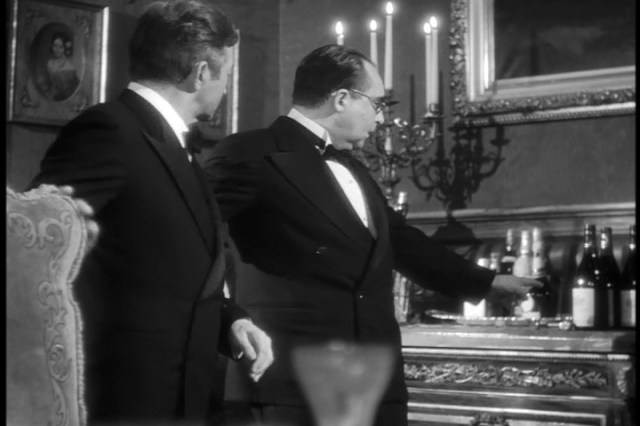
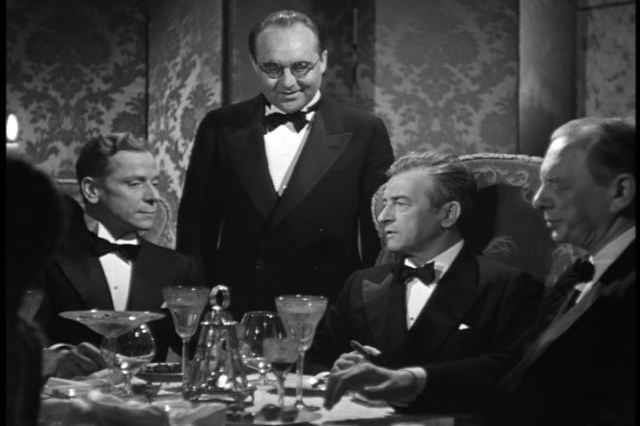
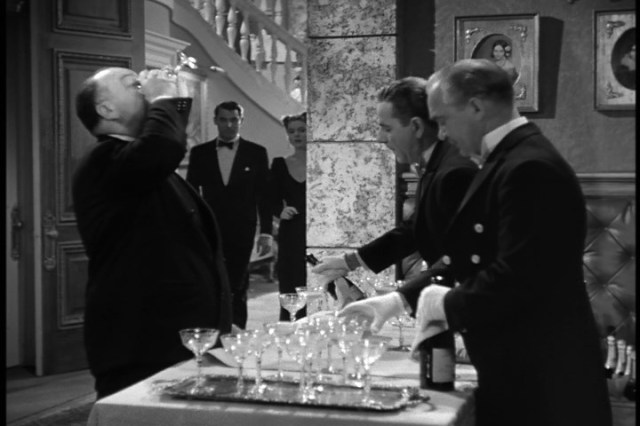
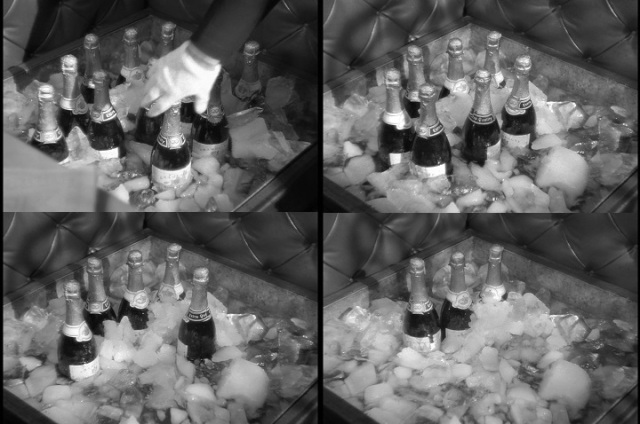
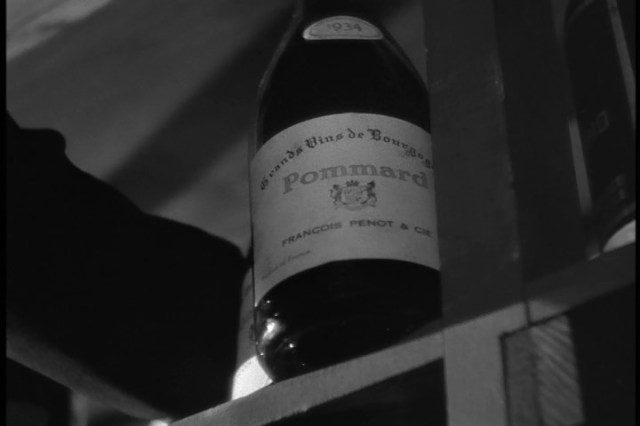
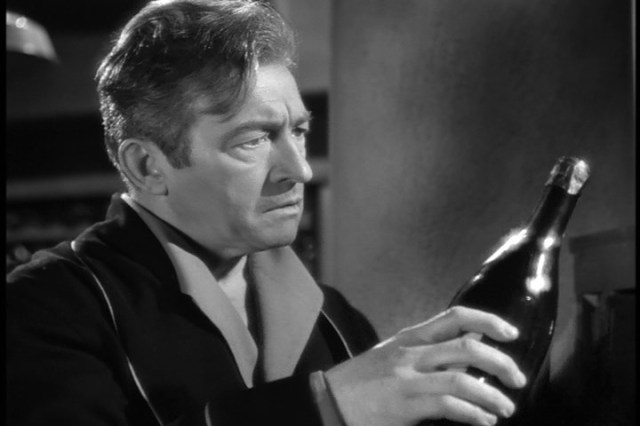
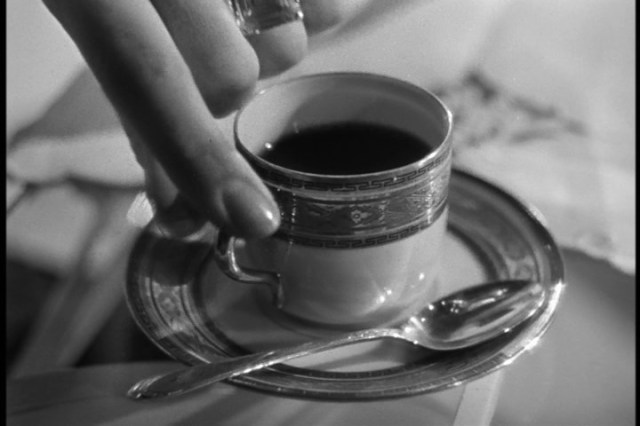
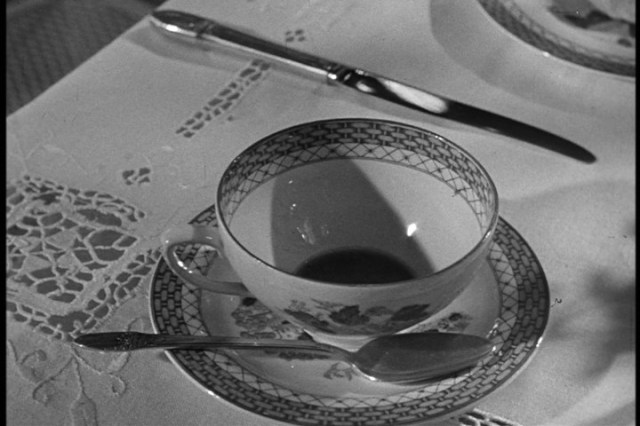
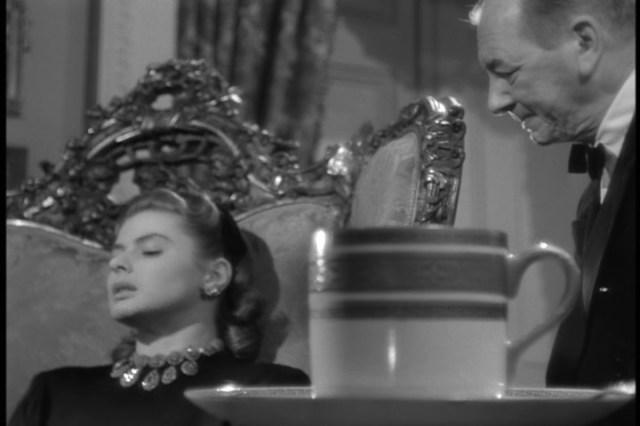
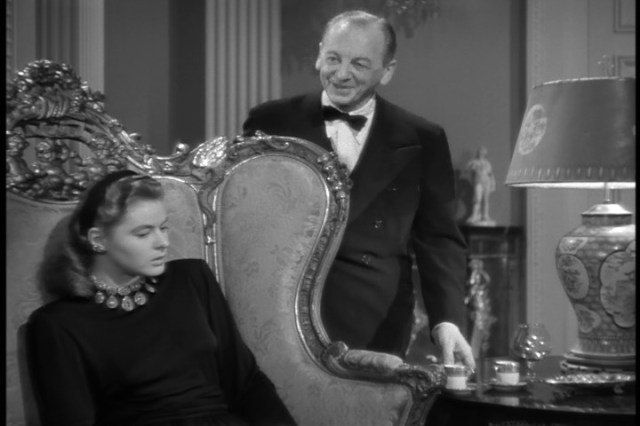
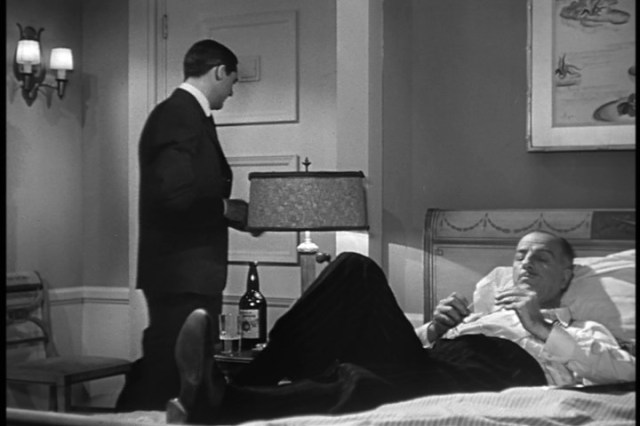
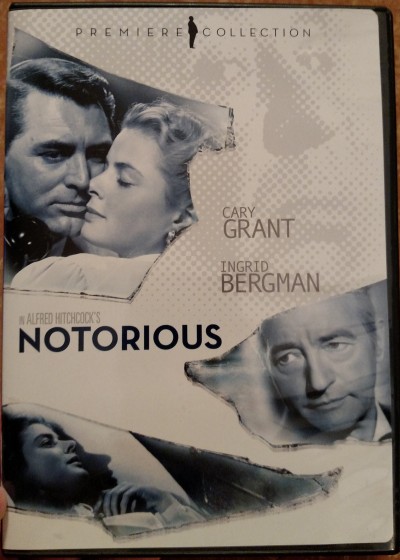
Love this movie and your wonderful post. Great analysis of some truly perfect images and filmmaking. Thanks so much for your work on this and being part of this event!
LikeLike
Thanks very much! I’m looking forward to reading other entries in this blogathon.
LikeLiked by 1 person
Loved this post! Your review was just like a Criterion Extra. I’m going to keep many of your points in mind the next time I watch this remarkable film.
Thanks for joining the blogathon with your excellent post.
LikeLike
Thanks so much, this has been fun!
LikeLiked by 1 person
This is just about a perfect film. Classic Hollywood doesn’t get any better than this. Criterion has always done Hitchcock well.
LikeLike
Indeed, I agree!
LikeLike
Nice, comprehensive post about a fantastic film. Truffaut knew his Hitchcock! It is a shame that the DVD is out of print, but this is a big enough film that the studios want to cash in.
LikeLike
One of my favorite Hitchcock films of all time, and a solid contender for THE favorite. I consider this his ‘smoothest’ film, especially for his direction; his camerawork, framing, and visuals are just so exquisitely done. And I love that final sequence: so full of emotion, and the look Alicia gives Devlin when he walks into her room just flat-out kills me every time I see it. I own that Criterion disc as well, and I didn’t know it was out of print! Nice review, Joshua!
LikeLike
Thanks very much for reading, and for your comment. I haven’t seen all of Hitchcock’s films, or even all his Hollywood films, but this is definitely my favorite.
LikeLike
It’s always great to see how our response to certain films evolves over time, even though the film is the same. It’s a testament to just how complex some films can be.
LikeLike
This film, like all great art, rewards repeated viewings by continuing to reveal new things when you watch it again.
LikeLike
Greetings from the Pure Entertainment Preservation Society! This is a fine article. I’ve only seen “Notorious” once that I recall, but it is indeed a dramatic and suspenseful film which features some wonderful acting. I didn’t notice the drink theme, but, now that you point it out, I see what you mean. That is a very clever tie-in which Hitchcock used to keep the film rolling.
I, Rebekah Brannan, have not participated much in the blog world in the past, but I intend to become more involved now.
I would like very much for you to participate in my upcoming blogathon, The Singing Sweethearts Blogathon, which will be my first real participation in PEPS. This blogathon, which will be hosted around Valentine’s Day, is celebrating the famous singing team Jeanette MacDonald and Nelson Eddy.
You can read the rules of the blogathon at: https://pureentertainmentpreservationsociety.wordpress.com/2017/12/20/ring-the-assembly-bell-here-comes-the-singing-sweethearts-blogathon/. If you want to join, please comment and tell me your topic, if you have chosen one. I hope you’ll join me in honoring this brilliant team and the holiday of love!
Joyfully,
Rebekah Brannan
LikeLike
Thanks for reading, and I appreciate the invitation. Unfortunately, my blog has been a bit slow on activity in the last couple months, but I hope to pick it up again as the spring progresses. I won’t be ready to participate in your blogathon, but I wish you the best with it!
LikeLiked by 1 person
Dear Joshua,
Thank you very much for your kind reply. I wish you good luck with your column!
Joyfully,
Rebekah Brannan
LikeLike